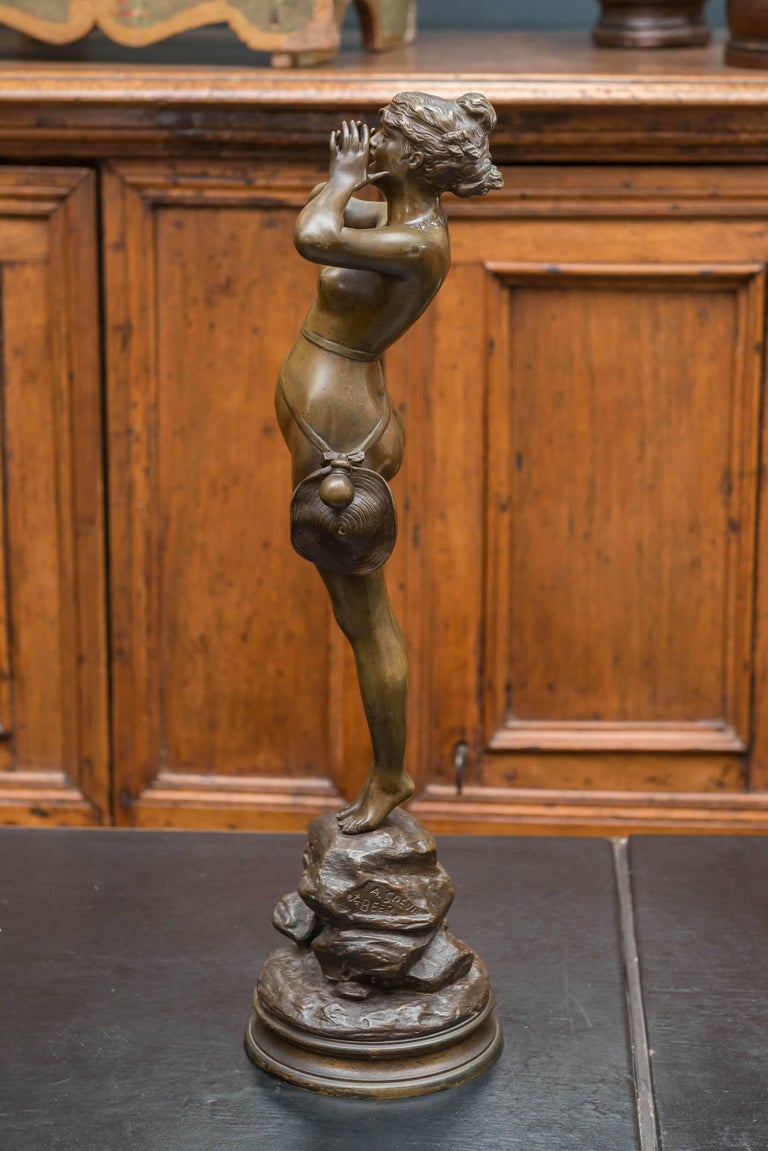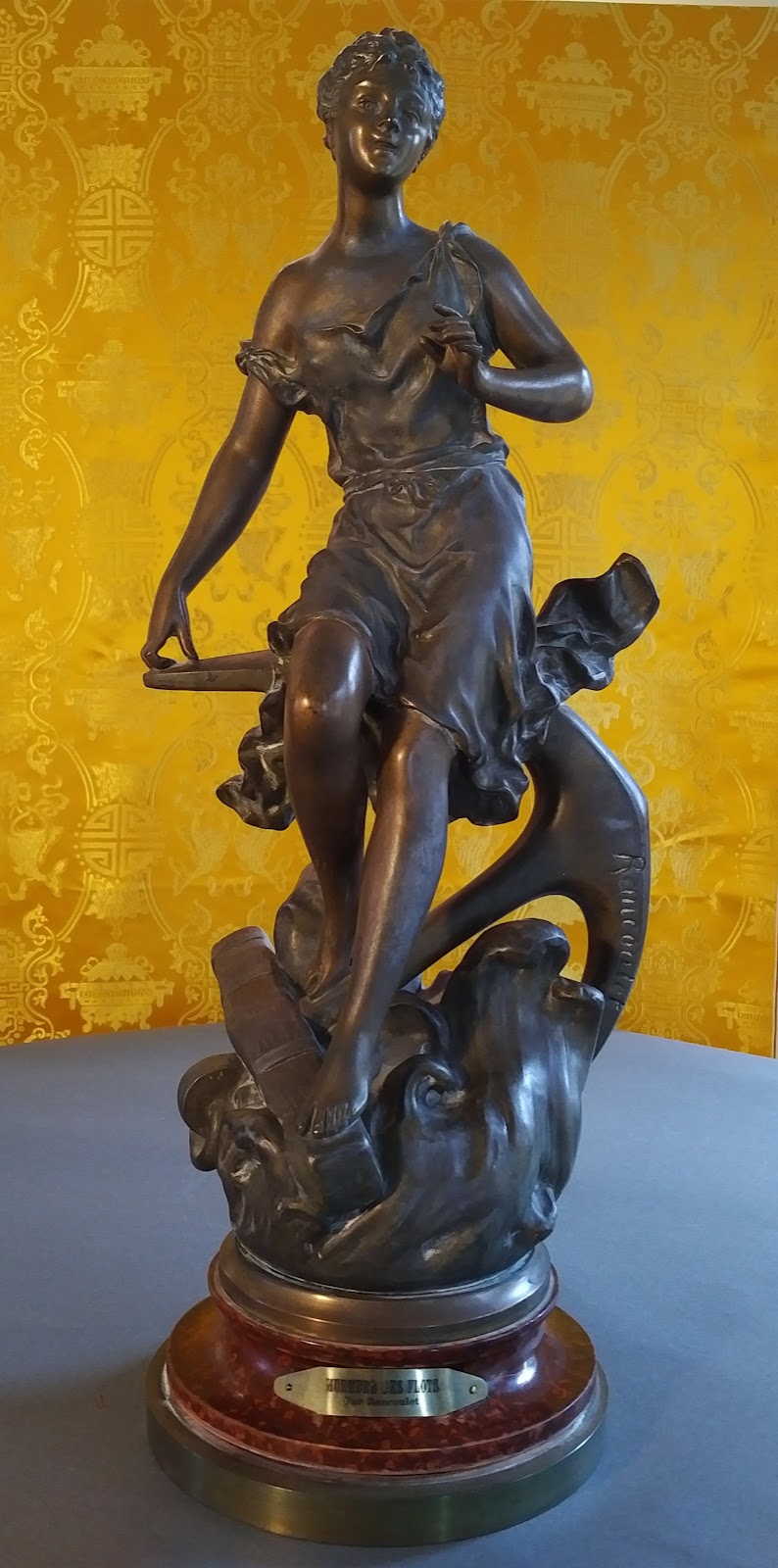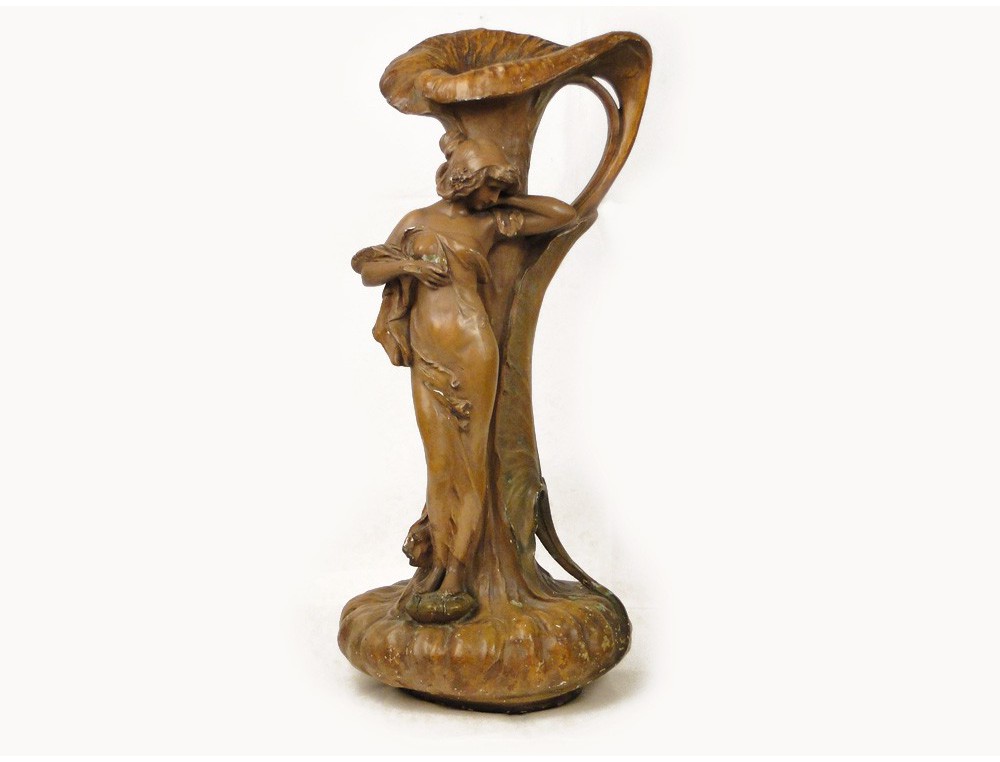Emmanuel Villanis Art Nouveau Bronze Sculpture "L' Otage"

Free photo Art Nouveau, Sculpture, Figure Free Image on Pixabay 2388453
Art Nouveau is a design movement that began in Belgium, grew gradually and spread across boundaries throughout 1880-1910. The term "Art Nouveau" was initially used to characterize the work of the group of twenty artists known as Les Vingt in the 1880s Belgian newspaper L'Art Moderne. The 1895 opening of the Parisian art gallery Maison de.
www.didoulabrocante.fr ancien statue sculpture art nouveau montée sur marbre danseuse élégante
By Rise Art. Art Nouveau was an exotic, decadent and ultimately contemporary departure from artistic tradition. Eschewing the tired and outdated historicism allied with classical architecture and design, artists purposely set out to revolutionise art and create something new - hence Art Nouveau. The movement developed steadily during the.

French Art Nouveau Bronze Sculpture by the Artist E.Villanis, Titled Lucrece LA166893
Decorative, sensual, and uncompromising, Art Nouveau ('New Art') emerged as a dynamic and expressive style in the visual arts from the early 1890s to the First World War. Taking its inspiration from the natural world, its characteristic motifs include delicate tendrils, organic forms, swooping, swirling lines, eccentric geometry and exotic bodies.

art nouveau sculpture Escultura, Art nouveau, Estatuas
Contents. 1 What Is Art Nouveau?. 1.1 Variations of the Art Nouveau Style; 1.2 Art Nouveau Architecture; 1.3 Art Nouveau Design and Illustration; 1.4 Art Nouveau Furniture Design; 1.5 International Art Nouveau Expositions; 2 Pioneers of the Art Nouveau Movement. 2.1 Gustav Klimt (1826 - 1918); 2.2 Antoni Gaudí (1852 - 1926); 2.3 Clara Driscoll (1861 - 1944); 2.4 Henri de Toulouse.

Art Nouveau Cast Iron Garden Sculpture of a Woman For Sale at 1stdibs
Art Nouveau was an art and design movement that grew out of the Arts and Crafts movement of the late 19th Century. Art Nouveau highlighted curvaceous lines, often inspired by plants and.

19th Century Art Nouveau Bronze Sculpture of a Female Adventurer by A. Grevin at 1stDibs
The term Art Nouveau was first used in the 1880s in the Belgian journal L'Art Moderne to describe the work of Les Vingt, twenty painters and sculptors seeking reform through art. The name was popularized by the Maison de l'Art Nouveau ('House of the New Art'), an art gallery opened in Paris in 1895 by the Franco-German art dealer Siegfried Bing.

Lot An Art Nouveau bronze sculpture of a lady holding flowers, 13 1/2 in. (34.5 cm)
Art Nouveau-style plate from La plante et ses applications ornementales (1896) by Eugène Grasset; Eugène Grasset, Public domain, via Wikimedia Commons. As a result, linear outlines took precedence over vivid colors like oranges, reds, and yellowish-orange.The Art Nouveau movement attempted to eliminate classical art systems, such as sculpture and painting being more essential than craft.

About Art Nouveau Blog about getting to know Art Nouveau Art nouveau, Sculpture art, Mucha art
History of Art Nouveau . The term "Art Nouveau" stemmed from the name of the Parisian art gallery, called "La Maison de l'Art Nouveau", owned by the avant-garde art-collector Siegfried Bing (1838-1905), which showcased works created in the Art Nouveau style. The gallery's reputation and fame was considerably boosted by its installations of modern furniture, tapestries and objets d'art at the.

Fine Antique Victorian Art Nouveau Sculpture of Venus and Cupid in Galerie de l'Art Nouveau
1880 -1910 Symbolism and Art Nouveau were simultaneous art movements that existed each on its own but that often came together on one piece. Symbolism focused on the abstract use of symbols to express the spiritual reality behind the physical world. Art Nouveau sought to bring modernity and elegance to composition and design.

A Henry Fugere Art Nouveau sculpture, France. Bukowskis
Art Nouveau, ornamental style of art that flourished between about 1890 and 1910 throughout Europe and the United States. Art Nouveau is characterized by its use of a long, sinuous, organic line and was employed most often in architecture, interior design, jewelry and glass design, posters, and illustration.

Art Nouveau Sculpture by Ernest Rancoulet "Murmure des Flotes" on composit base Treasures East
Art Nouveau is a style that emerged in the 1880s and lasted up to the beginning of the World War I. It spread through all western European and American countries with a significant level of industrialization. Despite its general unity, it had slight local differences but always remained modern and cosmopolitan.

French Art Nouveau Bronze Sculpture by Carabin in 2020 Art nouveau, Sculpture, Art
Art Nouveau Exhibition 9 Jun 2018—1 Mar 2020 Maurice Pillard Verneuil, Umbellated Rush, 1896, Julian Robinson Collection, purchased 1976 About Between 1890 and 1910, Art nouveau— the new art—was at its peak in Europe and America and was applied to art, architecture, graphic arts, interior design and the decorative arts.

White clay sculpture woman flower nymph Art Nouveau 19th 1880
Art Nouveau dominated much of the Western art and design worlds from the 1880s up to the start of World War I. The style was inspired by nature, spurred on by the Arts and Crafts movement, and served as a fundamental reaction against Industrialization. Wikimedia Commons. Katsushika Hokusai, The Great Wave off Kanagawa, 1830-32.

An Art Nouveau patinated bronze sculpture "Papillon", by Francis Renaud, France circa 1910
1890 - 1914. Decorative style of the late 19th century and the early 20th that flourished principally in Europe and the USA. Although it influenced painting and sculpture, its chief manifestations were in architecture and the decorative and graphic arts, the aspects on which this survey concentrates. It is characterized by sinuous, asymmetrical.
Art Nouveau Sculpture en Bronze
The term art nouveau first appeared in the 1880s in the Belgian journal L'Art Moderne to describe the work of Les Vingt, twenty painters and sculptors seeking reform through art. Les Vingt, like much of the artistic community throughout Europe and America, responded to leading nineteenth-century theoreticians such as French Gothic Revival architect Eugène-Emmanuel Viollet-le-Duc (1814.

French Art Nouveau Sculpture by PaulLucien Bessin, 1900 for sale at Pamono
Art Nouveau (New Art) An international artistic movement of the late 19th and early 20th centuries that emphasized the unity of the arts and sought to reflect the intensive psychic and sensory stimuli of the modern city. Although it influenced painting and sculpture, the movement's chief manifestations were in design, performance art, and.